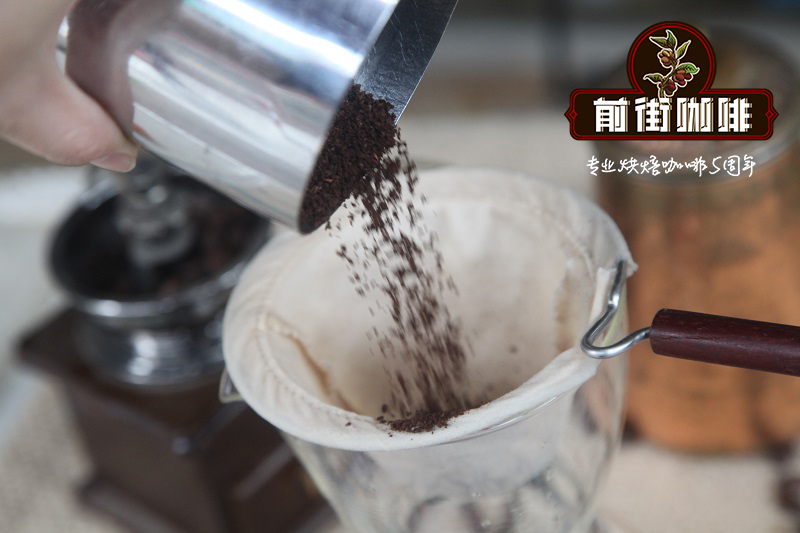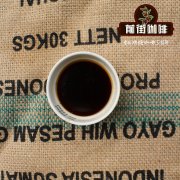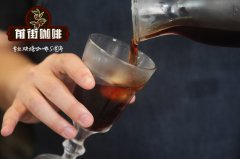Coffee hand Analysis of Aguirate Manor in Costa Rica _ Coffee Manor of the Aguilera Family

Professional coffee knowledge exchange More coffee bean information Please pay attention to coffee workshop (Weixin Official Accounts cafe_style)
Costa Rica is located in the Central American Isthmus, with volcanoes in the territory, natural advantages of sunshine and land. The climate is also tempered by Pacific Ocean and Atlantic Ocean currents and sea breezes. The coffee produced is deeply affected by the local micro-climate and terroir conditions. In addition, the horizontal stability of the treatment method and the cooperation of development policies have always been famous for producing bright, pure and clear coffee with rich acidity.
Costa Rica began growing coffee about 200 years ago, initially on the slopes of the Poas and Barva volcanoes, in what is today known as the Central Valley, with seven major coffee producing areas extending from northwest to southeast along the central plateau of the interior.
Fertile volcanic ash, mild temperatures, and steady rainfall are among the factors that have made coffee a major agricultural product in Colombia. There are now eight major coffee growing regions: Tarrazu, Tres Rios, West Valley, Central Valley, Orosi, Brunca, Turrialba and Guanacaste.
Although the western valley elevation may not seem as high as Tarrazu (1800 meters), but because the western valley is more exposed to the Pacific air flow, the temperature is often cooler than other mountains at higher altitudes…Therefore, the quality of coffee cherries and seeds is excellent.
Costa Rican Coffee House
Microprocessing plants have sprung up in Costa Rica in recent years, making it easier for more high-quality microbatches of coffee to be known to the market. The Aguilera's started growing coffee from their parents, whose father was one of the first to grow coffee in the area, planting the first coffee seeds on land that farmers had warned was unsuitable for coffee.
At present, there are 12 brothers and sisters inheriting the family business. The third generation has also joined the coffee industry for six times. Planting and caring for the coffee garden are all done by themselves. In addition to hiring several temporary workers to help pick coffee cherries during the harvest season (from the end of October to the beginning of March next year), post-processing, sun drying and storage are also done by themselves.
They understand that coffee quality represents the level of the estate and the processing plant, so they pay great attention to every detail. The Aquilet family not only produces excellent and delicious coffee, but also has a football team with outstanding results in various championships in Costa Rica.
The Aguilera family's production and marketing are controlled by itself and the pursuit of refined production, resulting in a high level of coffee, which won the fourth place in the Excellence Cup in 2007.(
Costa Rican Coffee Brewing Analysis
Recommended cooking method: hand brewing
Abrasion: 3.5 (Japan Kofuji R440)
V60 filter cup, 15g powder, water temperature 90 ℃, grinding degree 3.5, water powder ratio 1:15
Steaming with 40 grams of water for 30 seconds
Staging: water injection to 107 g water cut off, slowly water injection to 227 g.
40-107-227.
Total duration 2 minutes 02 seconds
BG grind 4Q, 90 degrees water temperature.
grinder dosers
aggressiveness number
powder quantity
filter bowl
BG
4Q
15g
V60
water temperature
steam
Second stage water volume
Third stage water
Total time 2:02
90 degrees
40g water 30s
67g
120g
Total water: 227g
Sweetness: † † †
Acidity: † † †
Bitterness: ☆
Other suggestions for trickle-filtration extraction:
Method pressure pot: recommended 3.5--4 grinding degree, water temperature 91 degrees
END
Important Notice :
前街咖啡 FrontStreet Coffee has moved to new addredd:
FrontStreet Coffee Address: 315,Donghua East Road,GuangZhou
Tel:020 38364473
- Prev

Costa Rica La Haas Manor Coffee brewing parameters sharing _ what is the anaerobic Yellow Honey treatment
For more information about coffee beans, please follow the Coffee Workshop (Wechat official account cafe_style) Costa Rican Coffee La Lajas Manor is located in the central valley at the foot of the Pos de Alajuela volcano. It has been operated by the Chacn family for more than 80 years. The manor is 13001500 meters above sea level and has an annual output of about 46000 kg. La Lajas Manor every year
- Next

Costa Rica Amapola Estate Coffee How to Drink_Costa Rica Tara Beads Coffee Brewing Advice
Professional coffee knowledge exchange More coffee bean information Please pay attention to coffee workshop (Weixin Official Accounts cafe_style) Costa Rica Costa Rica is located in the isthmus of Central America, 10 N, 84 W. East Caribbean Sea, west of the North Pacific Ocean, located in Central America's low-latitude volcanic belt, the central plateau and mountains about 8002000 meters above sea level, suitable for coffee growth. Costa Rica's
Related
- Detailed explanation of Jadeite planting Land in Panamanian Jadeite Manor introduction to the grading system of Jadeite competitive bidding, Red bid, Green bid and Rose Summer
- Story of Coffee planting in Brenka region of Costa Rica Stonehenge Manor anaerobic heavy honey treatment of flavor mouth
- What's on the barrel of Blue Mountain Coffee beans?
- Can American coffee also pull flowers? How to use hot American style to pull out a good-looking pattern?
- Can you make a cold extract with coffee beans? What is the right proportion for cold-extracted coffee formula?
- Indonesian PWN Gold Mandrine Coffee Origin Features Flavor How to Chong? Mandolin coffee is American.
- A brief introduction to the flavor characteristics of Brazilian yellow bourbon coffee beans
- What is the effect of different water quality on the flavor of cold-extracted coffee? What kind of water is best for brewing coffee?
- Why do you think of Rose Summer whenever you mention Panamanian coffee?
- Introduction to the characteristics of authentic blue mountain coffee bean producing areas? What is the CIB Coffee Authority in Jamaica?

